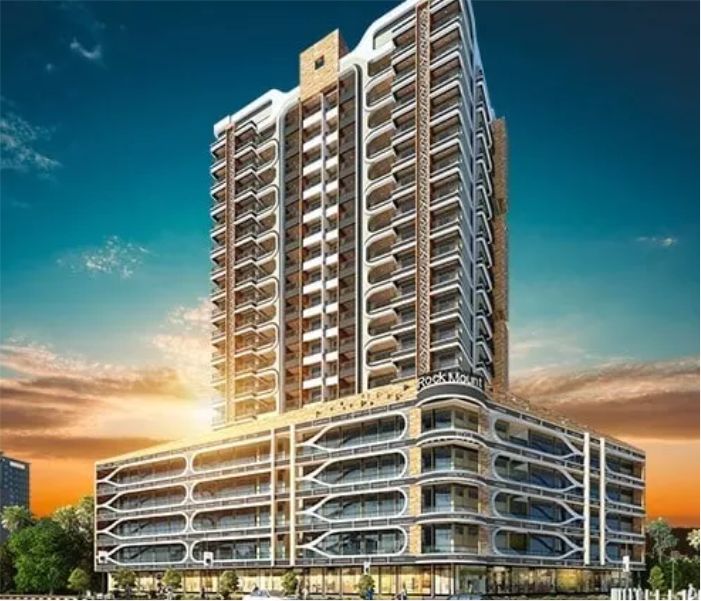
Bricks are one of the oldest and most reliable building materials cast off in construction. With their flexibility, durability, and aesthetic appeal, bricks have been used for centuries to build strong and beautiful buildings across the world. This guide will deliver a deep dive into the world of bricks – their engineering process, classifications, properties, and the various types used in modern construction.
What Is A Brick?
A brick is a block complete with clay that has been moulded, dried, and fired at high temperatures to make a solid, durable building unit. Bricks are laid down in courses using mortar to form walls, concretes, and other masonry structures.
The key characteristics of bricks are:
• Rectangular shape for easy placing of courses
• Presence of centers or voids to reduce weight
• Burnt clay material that delivers strength
• Segmental sizes for ease of construction
Bricks have been used as a general building material for millennia owing to their permanence, aesthetics, affordability, and thermal insulation properties. Modern progressions in brick manufacturing have led to greater accuracy and uniformity in size and shape.
Classification Of Bricks
Bricks can be classified in dissimilar ways based on their manufacturing process, materials, usage, and shape. The common organizations are:
Based On the Manufacturing Process
• Burnt clay bricks – The most common type, made by moulding clay which is then passionate at high temperatures. They have high strength and sturdiness.
• Concrete bricks – Made from concrete under high pressure. They have lower strength than overcooked clay bricks.
• Fly ash clay bricks – Industrial from clay and fly ash, a by-product of coal combustion. They are more environmentally friendly.
• Engineering bricks – Shaped exactly for special structural requirements. They have extra strength but are costlier.
Based On Materials
• Clay bricks – Most ubiquitous, made from clay or clay varied with additives. They have high toughness.
• Concrete bricks – Complete from concrete. They are cheaper but have lower strength.
• Fly ash bricks – Mass-produced from clay and fly ash. They have good strength and are eco-friendly.
• Sand lime bricks – Made from sand, lime and fly ash. They have low compactness and high fire resistance.
Based On Usage
• Common bricks – The most widely used bricks in universal masonry applications. They are relatively porous.
• Face bricks – Used on exterior surfaces where arrival is important. They have a smooth uniform finish.
• Paving bricks – Used for paving driveways, patios, footpaths etc. They are stronger and more scratch-resistant.
• Based On Shape
• Solid bricks – Bricks made of solid material without perforation or voids. They are heavier and conduct heat better.
• Punctured bricks – Bricks with patterned holes called perforations. The holes make the bricks lighter.
• Hollow bricks – Bricks with big four-sided voids running longitudinally. They are light and have better insulation.
Different Types Of Bricks
The excellent of brick type is based on factors like application, structural needs, insulation, cost, availability etc. Advanced manufacturing now permits tailoring bricks for specific requirements.
Common Burnt Clay Bricks
The most usually used bricks for general masonry structures. They are made from clay, enthusiastic at high temperatures for strength. Comprises common, facing, and engineering bricks. They are durable, fire resistant, and have high compressive strength. Common bricks have comparatively higher porosity and are appropriately used for inner walls.
Clay Face Bricks
These bricks have an attractive uniform finish making them ideal for exterior facades. Face bricks come in dissimilar colours and textures allowing for creative freedom. They are more luxurious than common bricks.
Sand Lime Bricks
Made from sand, lime and fly ash, these bricks have low thickness and high fire resistance. They also offer great thermal and sound insulation. The downside is their moderately lower strength.
Their uniform shape presents a smoother surface that doesn’t require plastering.
They offer excellent strength for load-bearing constructions.
They are gray instead of the standard reddish color. Different pigments can be additional for ornamental purposes.
• Less mortar is obligatory during construction.
• Edges are straight and detailed, making construction easier.
• They do not crystalize salts and minerals.
Concrete Bricks
Concrete bricks are inexpensive, made from solid concrete poured into molds. They are traditionally used in interior brickwork but are more often used in exterior work, offer better sound and heat insulation, and have a uniform shape and size. On the flip side, they are not as strong as burnt clay bricks. Reinforced concrete bricks provide extra strength.
Engineering Bricks
Engineering bricks are used mainly in civil projects where strength and resilience against the elements are vital. They are clay-based and can be varied with many other materials. Shaped with precision for special structural requirements, engineering bricks possess high strength and load-bearing capacity. Their smooth finish adds to the aesthetics. Use is incomplete to specialized structures due to the high cost.
Fly Ash Clay Bricks
Bricks manufactured from clay and fly ash proposal great environmental benefits as fly ash is a waste product. They have good strength and insulation possessions. This type of brick is sometimes labelled as self-cementing since it contains a high volume of calcium oxide and expands when exposed to moisture. Creation them requires less clay leading to conservation of topsoil.
Typical uses for fly ash clay brick include:
• Structural walls
• Foundations
• Pillars
• Anywhere that improved fire resistance is required
Hollow Clay Bricks
Their unique shape with longitudinal voids makes these bricks lighter than solid bricks. The voids deliver insulation and aid in reducing structural weight. These are best suitable for partition walls and infill in RCC framed constructions.
Perforated Clay Bricks
Bricks with patterned holes or punctures are lighter and offer better sound absorption. They require less clay and are more maintainable. Perforated bricks are used for interior divider walls in houses.
Types Of Bricks For Building Construction
Bricks are among the most usually used building materials in construction across all kinds of projects. The most appropriate brick type varies based on the structural necessities and construction application.
Burnt Clay Common Bricks
With their high compressive strength and sturdiness, common burnt clay bricks are used lengthily for building construction. They are placed in courses with cement or lime mortar. Common bricks are appropriate for most walls and structures.
Perforated Clay Bricks
Their strength mutual with lightness and better insulation make these ideal for partition walls, infill panels etc. The modeling of perforations can be used decoratively in brickwork.
Concrete Bricks
Concrete bricks are an inexpensive alternative to clay bricks. Though lower in strength, they still sufficiently serve in masonry structures not expected to handle very high loads. They are also more uniform in size.
Fly Ash Clay Bricks
Bricks industrial from clay and fly ash, which is an industrial by-product, provide sustainability benefits. They have high compressive strength and are thus appropriate for use in all kinds of structures and structures.
Hollow Clay Bricks
Hollow bricks are extensively used for structure partition walls. They are lighter and provide outstanding thermal and sound insulation too. Craters make them easy to cut and shape as needed on-site.
Face Bricks
With their pleasing uniform texture and variety of available colours, facing bricks are ideal for use on external surfaces and facades. This permits the creation of interesting patterns and finishes. But they are costlier.
Sand Lime Bricks
Though comparatively weaker in compression, sand lime bricks offer the advantages of fire resistance, thermal insulation and uniform shape. They are usually used in regions with limited availability of clay.
Engineering Bricks
Their very high strength and density make manufacturing bricks perfect for specialized constructions like tall chimneys, storage tanks and basis footings that handle heavy loads.
Types Of Bricks Used In Historical Buildings
The ancient architectural marvels built centuries ago frequently used bricks lengthily in their construction. Obtainable materials and required structural properties governed the choice of bricks used in these historical buildings.
Solid Clay Bricks
The most common brick type used in historical buildings across characteristics is the traditional four-sided solid clay brick joined using lime or mud mortar. High compressive strength allows the building of durable load-bearing walls.
Burnt Clay Bricks
Clay bricks burnt in kilns were prevalent in early architecture as firing imparted higher sturdiness and water resistance associated to sun-dried bricks. The quality of clay strongminded the brick’s strength.
Mud Bricks
Mud or adobe bricks were one of the initial man-made building materials. They were unburnt bricks complete from clay, mud and even straw. Though weak, they were cheap and used for constructing thick walls.
Sandstone Bricks
Sandstone bricks were thru from blocks of sandstone cut into brick sizes. They have good compressive strength but are luxurious to quarry and cut. Sandstone bricks lend a unique texture and arrival.
Limestone Bricks
Limestone bricks were used where this grainy rock was amply available. They are weather-resistant but have lower asset than other stone bricks. Limestone details frequently adorned brick buildings.
Granite Bricks
Granite is an igneous rock brick type used in antique structures where available. Granite bricks have very high strength and load bearing capacity but were problematic to quarry and shape by hand.
Travertine Bricks
This cream-colored type of limestone was used by the Romans to idea many famous structures still intact today. Travertine has good assets and aesthetic qualities. But like most natural stones, shaping it into bricks was difficult.
Common Brick Types For Residential Projects
Choosing bricks for residential developments like houses, apartments etc. requires factoring in cost, physical needs, insulation and aesthetics. Some of the most common element types suitable for residential projects are:
• Burnt Clay Common Bricks
• Hollow Clay Bricks
• Perforated Clay Bricks
• Concrete Bricks
• Fly Ash Clay Bricks
• Face Bricks
Types Of Bricks And Their Uses In Construction
Bricks have remained a popular construction material owing to their versatility, with different brick types suited for various applications based on their attributes:
Common Burnt Clay Bricks
Thanks to their excellent strength and durability, these are the most widely used bricks for masonry construction in all types of walls, panels, surfaces etc. They are laid in overlapping courses using mortar.
Perforated Clay Bricks
The pattern of holes makes these bricks lighter than their solid counterparts. This allows building taller structures faster and at lower costs without compromising strength. They also have better insulation.
Face Bricks
Used in façade and exterior surfaces to enhance aesthetics of buildings. Variety of textures, patterns and colors available. More expensive than common bricks but add to the visual appeal.
Engineering Bricks
Very dense bricks manufactured for extra strength requirements. Use is limited to specialized structures like underground facilities, tall chimneys and retaining walls that handle high loads.
Hollow Clay Bricks
bricks have voids running throughout their length. This provides insulation benefits and reduces weight, allowing faster construction of high-rises. Hollow bricks are extensively used for partition walls.
Paving Bricks
Paving bricks have extra abrasion and weather resistance to sustain wear from foot traffic, vehicles etc. Different patterns can be created by layouts using distinct colors and shapes.
Lightweight Bricks
Bricks with lower density like hollow, perforated and cellular concrete bricks are useful where reducing structure weight is important. Lighter bricks also have better insulation properties.
Comparison Of Brick Types – Pros And Cons
There is a wide variety of brick types to choose from in masonry construction. Here is a look at the relative pros and cons of some common brick types:
Burnt Clay Bricks
Pros – Excellent strength, durability, fire resistance and weathering properties. Wide availability.
Cons – Brittle failure under tension. Heavier and costly to transport. It needs firing fuel source.
Concrete Bricks
Pros – Cheaper than burnt clay bricks. Consistent sizing and uniform shape. Recyclable.
Cons – Less strong in compression and tension compared to burnt clay. Heavier than hollow bricks.
Fly Ash Clay Bricks
Pros – Utilizes waste fly ash, affordable. Good strength and fire resistance.
Cons – May have higher water absorption than clay bricks unless glazed. Limited availability.
Sand Lime Bricks
Pros – Good thermal and sound insulation. Uniform size and fire resistant.
Cons – Relatively weaker strength than other bricks. Not suitable for high load bearing walls.
Hollow Bricks
Pros – Lightweight, lower thermal conductivity, savings in mortar use.
Cons – Weaker than solid bricks. Not recommended for load-bearing structures.
Guide To Choosing The Right Brick Type
• With the wide variety of bricks available, selecting the optimal brick type for a construction project requires considering multiple aspects:
• Structure Type – Load-bearing walls need high-strength bricks like engineering, burnt clay etc. Hollow bricks suit partition walls.
• Location and Climate – Hotter and drier regions do better with burnt clay bricks. In colder locations, insulation properties should be prioritized.
• Budget – Clay facing bricks add aesthetics but are expensive. Concrete bricks offer cost savings over burnt clay ones.
• Availability – What raw materials and brick manufacturing facilities exist nearby? This impacts transportation costs too.
• Appearance – Face bricks or special finishes available if aesthetics are important, like in exposed surfaces.
• Sustainability – Fly ash clay and perforated bricks reduce clay usage and are more eco-friendly.
• Insulation Needs – Hollow, cellular concrete or fly ash bricks have lower thermal conductivity.
• Fire Resistance – Fire clay and high alumina bricks have the highest resistance to heat.
• Carefully analyzing the above factors for every construction project leads to choosing bricks that are structurally sound, visually appealing, affordable and sustainable.
Most Durable Types Of Bricks For Driveways
Designing a driveway requires durable paving that can withstand vehicular movement, weathering and wear-and-tear over time. Some of the most durable types of bricks well-suited for driveway construction are:
Paving Bricks
Paving bricks meant for outdoor use are denser and hence more durable than standard bricks. They are specifically designed to endure wear from pedestrian and vehicular traffic.
Fireclay Bricks
Made of refractory clays, these bricks are extremely hard and dense. Fireclay bricks are resistant to abrasion from friction making them last very long even under constant movement.
Engineering Bricks
Confidential as heavy-duty bricks, engineering bricks have very high compressive strength. This also informs an ability to sustain substantial abrasive forces without damage.
Perforated Clay Bricks
Perforations make these bricks lighter than solid clay bricks but still hard-wearing enough for driveways. The holes also bring better skid resistance when wet.
Belgian Blocks
These are granite cubes cut into brick sizes. With their outstanding hardness, Belgian blocks maintain their shape and honesty over decades of traffic on driveways.
Concrete Bricks
Concrete bricks and pavers are cheaper selections that offer the advantage of reliable dimensions for ease of laying. Armored existing bricks can match clay bricks in durability.
Eco-Friendly Bricks – New Sustainable Brick Types
With rising ecological concerns, labors are ongoing to develop more sustainable and eco-friendly types of bricks with lower ecological impact:
Fly Ash Clay Bricks
These use fly ash, a waste by-product of coal power plants to manufacture bricks. This decreases both clay consumption and industrial waste. Fly ash bricks have good asset.
CLC (Cellular Lightweight Concrete) Bricks
CLC bricks are ended by adding pre-formed foam to concrete to create air pockets, falling the material weight. This saves prices, raw materials and energy used for transportation.



Recent comments(1)
Henry
Hello, is it okay to use Hollow clay blocks in the foundation of a non storeyed house?